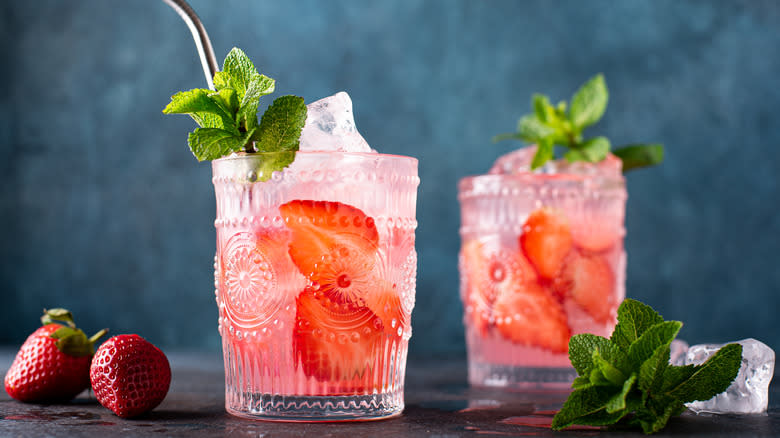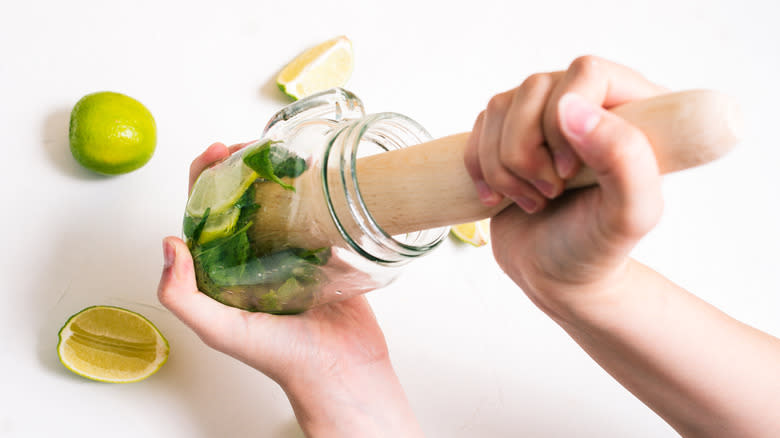Here's Why Mixologists Slap (Instead Of Muddle) Herbs

Your bartender knows a lot about your cocktail's garnish. In fact, the decision to slap or muddle a mint leaf in your classic mojito cocktail, for example, comes down to a basic bit of science that you probably learned about in school.
The leaves of herbs like mint or basil aren't just for looks — they contain oils that emit wonderful scents and flavors, and these can elevate your drinking experience from first smell to first taste. The chemical chlorophyll is also present in herbs' leaves and stems. Chlorophyll may be good for pigmentation during photosynthesis, but when it's released into craft cocktails, it smells and tastes unpleasant. Releasing it will most likely make your cocktail taste bitter (and will probably make you feel the same way). Skilled mixologists know that the trick to getting the "good" oils out of an herb without emitting a bitter blast has everything to do with how aggressively they handle the leaves.
A smack, a slap, a clap — no matter what you call it, this method is a great way to puncture leaves' cell structures where the good oils are contained. If you muddle instead, you'll definitely release these oils, but you'll also likely tear your herbs' leaves and stems, thus releasing their chlorophyll. Essentially, whack it — don't attack it. This way, your garnish will work for you.
Read more: Popular Vodka Brands Ranked From Worst To Best
Has Muddling Left The Building Altogether?

If the rough business of muddling threatens to unleash the beastly bitterness of chlorophyll, why does anyone still muddle at all? In a word: citrus. Bartenders love the bright flavor (if not the hassle) that the acidity of muddled citrus brings to some cocktails. While citrus can handle the muscle of muddling, this gets tricky when you add herbs to that muddle, like a basil leaf to build flavors for a lemon basil vodka martini. That kind of muddling still threatens to be too rough on an herb leaf, so mixologists are forced to proceed with caution.
Additionally, using the right muddling technique helps. Muddlers have two ends; one is rounded while the other is flat or has pointy rubber "teeth." Start your citrus muddling with the rounded end, then move to the flat end when you start working with your herbs. Press (don't crush) your herb leaf and twist. You'll notice the rising fragrance after a few repeated twists. If your muddler has teeth, be gentle enough so that you don't tear the herb leaves.
Think light pressure when working with your muddler. It still has a place behind your home bar for use in certain cocktails, but when it comes to cocktails that only have herb garnishes, a good wallop should do just fine.
Read the original article on Mashed

 Yahoo Lifestyle
Yahoo Lifestyle 
